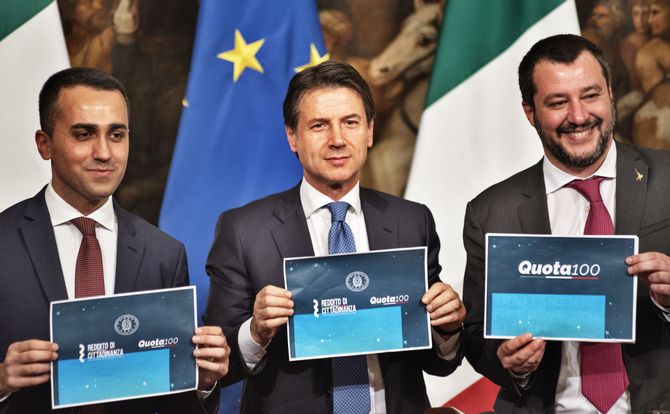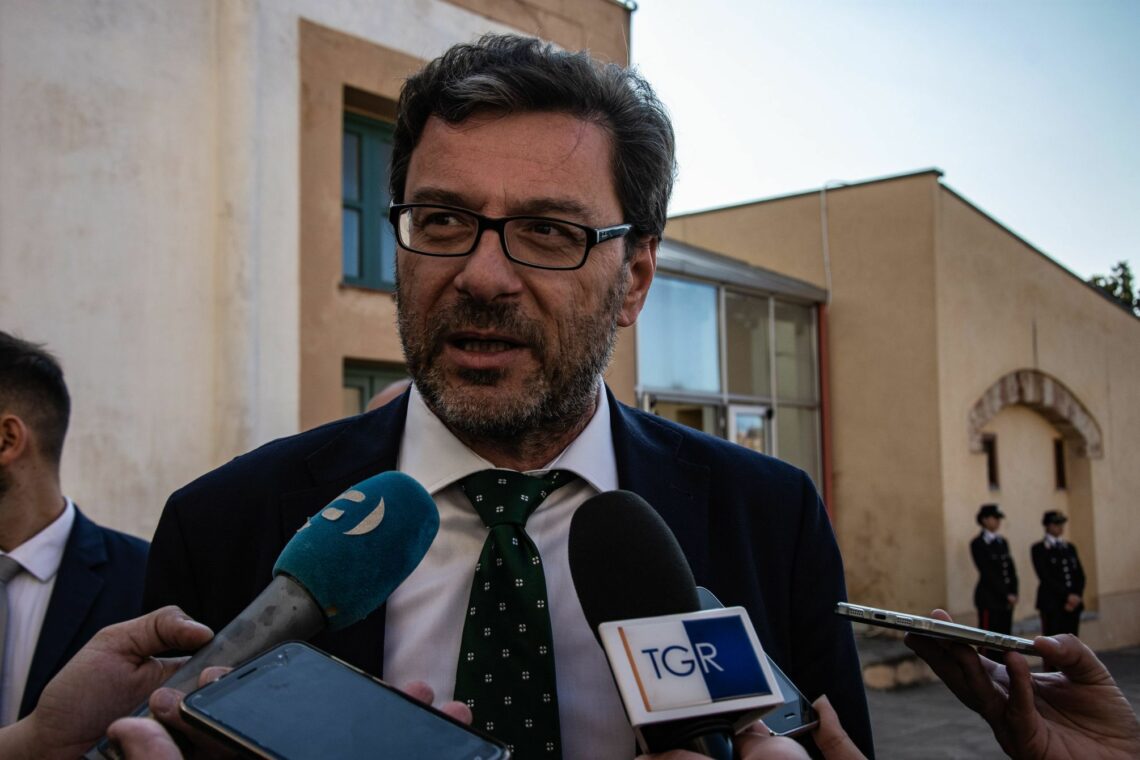EU elections shake the stability of Italy’s coalition
The European Parliament elections in May upended the balance of support for the parties in Italy’s coalition government, with Lega far outpacing the Five Star Movement. Rank-and-file members of both parties could benefit from new elections, but their leaders have good reasons for keeping the coalition together. Can it last?

In a nutshell
- Lega has gained political traction over the Five Star Movement
- Rank-and-file members of both parties want a new election
- Political differences are straining the partnership
- Still, both party leaders want to keep the coalition together
All politics is local. The European elections in May were mostly a vote on national politics and conveyed the judgment of each country’s voters on their respective governments. In Italy, the elections saw gains for one of the two parties in the government, and a sharp decline for the other. The Five Star Movement (M5S), which garnered a staggering 32 percent in the 2018 national elections, in May received just 17 percent of the vote. Lega (the League, formerly known as the Northern League) moved up to 34 percent from 17 percent in 2018. It is worth remembering that the participation rate was close to 73 percent in the 2018 general elections and 54.5 percent in the 2019 European elections.
Before the May vote, both parties declared a new era was on its way. They claimed the success of similar, populist and nationalist parties across the continent would usher in new EU rules allowing for Italy to spend itself into growth.
Isolated Italians
As the adage goes, one should be careful about what one wishes for. Nationalists in Austria, Germany and the Nordic countries certainly sympathize with Lega on immigration, but they are not willing to support its demands for a larger government deficit. Liberal European parties are naturally hostile to the Italian government, too, as are French President Emmanuel Macron and German Chancellor Angela Merkel.
The budget needs to be adjusted, which creates a political problem for both parties.
In its spring 2019 economic forecast, the European Commission projected Italy’s public debt ratio would markedly increase, reaching 133.7 percent in 2019 and 135.2 percent in 2020. The cost of servicing Italy’s debt is increasing, as the widening Italy-Germany 10-year bond spread suggests. It seems the budget needs to be adjusted, which clearly creates a political problem for both parties in government. This is exactly the type of situation in which a friendlier relationship with Brussels would help. For this reason, Prime Minister Giuseppe Conte has supported Ursula von der Leyen’s bid to become European Commission president and, in particular, Christine Lagarde’s nomination as head of the European Central Bank, where a friend could be of use for Italy.
But Conte has acted somewhat independently of his coalition in these circumstances. Despite Lega’s impressive performance, both parties look increasingly isolated in Europe. Paradoxically, M5S (where the prime minister has a stronger influence) voted for Ms. von der Leyen for Commission president, in an unexpected alignment with the European “mainstream,” but Lega did not. This may introduce more tension, as Lega very much hopes for a seat in the EU Commission.
But what about in Italy itself? Combined, the governing parties actually increased their total share of the vote. Are these gains a sign of lasting public support?
Style vs. substance
The elections’ result seems bound to upend the coalition’s equilibrium. For months, daily newspapers and political commentators had predicted its inevitable breakup, in view of the two parties’ apparently irreconcilable differences. Broadly speaking, the M5S is left of center, won most of its votes in 2018 in the country’s south (gaining even 50 percent support in some areas), essentially because it promised a universal basic income. Such a measure had a strong appeal in the more economically backward parts of Italy, where traditional political parties used to win votes with promises of new public expenditures. Lega won most of its votes in the north, its traditional bastion, where the small-business owners and their employees are typically impatient with tax transfers to the south.
Both parties distrust any intermediaries between the voters’ will and political action.
Yet the geographical distribution of the votes and what that tells us about the electorate is only part of the story. Other important factors are in play. The governing parties share something that today seems more valuable than any set of policies: a style. Both the M5S and Lega propose a version of democracy that has no time for intrusive, mediating institutions, and no patience for established systems of rules. They both distrust any intermediaries between the voters’ will and political action, supplying their constituency with a vision of fast, effective government, and feeding them rhetoric that does not paint prudence as a virtue.
They both attacked the European Union and they both flirted with the idea of Italy leaving the bloc, or “Italexit.” Broadly speaking, they both consider government to be the ultimate answer to whatever problems Italians may have. Surprisingly for the spokesman of the former “party of the North,” Deputy Prime Minister Matteo Salvini has removed from his speeches any reference to government waste and any promise to cut or rationalize public spending. Recently, he openly claimed that tax cuts are dangerous for the economy. On the European front, he has repeatedly called for a repeal of both the Fiscal Compact and the 3 percent deficit threshold in the Maastricht Treaty.
Mr. Salvini’s enthusiasm for government spending has prompted M5S leader Luigi Di Maio to caution against increasing public debt. However, no one considered his fiscally responsible stance credible. After all, in September 2018 Mr. Di Maio celebrated the increase in Italy’s fiscal deficit on the balcony of the prime minister’s official residence.
The question of how long the government will last is thus more difficult to answer than it seems.
Intraparty tensions
The Five Star Movement’s rules forbid Mr. Di Maio, who also serves as deputy prime minister, from a second term as party leader, since he already has two parliamentary terms under his belt. While M5S has at times shown flexibility, it did enforce the rules in the case of Turin Mayor Chiara Appendino, one of the “moderate” faces of the movement. She has been barred from running for mayor a second time. Many in Mr. Di Maio’s party are convinced that any further time in government will hurt their electoral chances – Mr. Salvini’s right-wing agenda is anathema to a significant share of their supporters.

Likewise, Mr. Salvini needs to confront some of the senior Lega members, including Giancarlo Giorgetti, who is Secretary of the Council of Ministers, traditionally one of the most consequential appointments in the Italian government. Mr. Giorgetti and his allies belong to Lega’s pre-Salvini old guard. They have more experience in government, including during the Berlusconi era.
Their biggest concern is the next Italian budget law. Senior members of the party remember well the 2011 crisis that ended up dethroning Silvio Berlusconi. They want to hold new elections in the autumn, in hopes of a convincing win that would put them in charge of the government, without M5S as a partner and with five years in front of them. That would give them the best chance to push through a painful budget correction today, hoping to be more generous tomorrow.
The rapid growth of support for Lega throughout Italy is another factor that plays a big role in their thinking. In the EU elections, for the first time ever, the party reached a double-digit percentage of the vote in southern Italy. Lega’s rise is in part due to Mr. Salvini’s appeal and his battle against immigration, but also to the addition of several political figures from other center-right parties. Lega’s old guard considers early elections as the only way to remain in charge of the party, which otherwise will soon be completely under the control of Mr. Salvini and his new acolytes.
Yet given Mr. Salvini’s conversion to the Church of Big Spending, how is the prospect of a new Lega-led government engaging in the necessary fiscal tightening compatible with an electoral campaign in which the party would promise the opposite?
Shrewd Salvini
For Mr. Salvini himself, early elections would offer an easy path to the premiership. His likely center-right allies, Mr. Berlusconi’s Forza Italia and Giorgia Meloni’s Fratelli d’Italia (Brothers of Italy), could only be his junior partners. Still, Lega’s leader seems to be keeping himself busy mending the government. He has no shortage of opportunities to bring it to an end, but appears to prefer to keep it going.
Mr. Salvini’s decision not to push for early elections has proven sensible.
There are two plausible reasons for Mr. Salvini’s caution. The first has to do with his shrewdness. Nobody knows better than he how fickle the Italian vote has become. It may make another about-face, especially if financial storm clouds appear on the horizon. The second has to do with his ideology. In the past few years, Mr. Salvini has surrounded himself with economists and pseudo-economists who preach some version of the so-called “modern monetary theory.”
Recently, this group presented a proposal for small-denomination bonds to help pay government debts to businesses, which was seen as the de facto introduction of a parallel currency to the euro (and thus dismissed as incompatible with European treaties by many, including European Central Bank President Mario Draghi). Their ultimate goal is Italy leaving the euro and going back to its own currency, to monetize its debt and open the way to a new golden era of ever-increasing public spending, happily free from European rule. If this is the ultimate goal, M5S seems a more reliable partner than any party on the traditional right, which would favor fiscal prudence both by ideology and due to pressure from the business community.
Mr. Salvini’s decision not to push for early elections also seems sensible in light of the scandal that erupted after reports that his former spokesman, Gianluca Savoini, allegedly met with Russian interlocutors to finance Lega’s electoral campaign. While the allegations seemingly have not reduced Mr. Salvini’s electoral appeal, they do show a certain degree of amateurism in party management.
In this context, Prime Minister Conte is becoming a more important player. Typically considered a second-rate figure, Mr. Conte has strong approval ratings and maneuvered in favor of Ms. von der Leyen and Ms. Lagarde. He is emerging as Italy’s responsible left-winger, preaching social justice but understanding the importance of keeping public finances under control.
For these reasons, the European Parliament elections did not decide the fate of the Italian government, as many believed. There will be no early elections this fall. What looms on the horizon is a tougher budget law. How Lega and M5S propose to deliver it is a mystery – as is how they will survive it.








